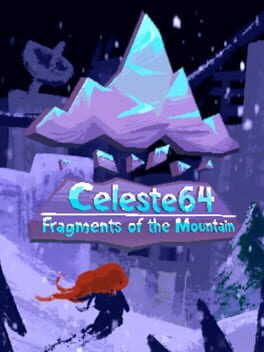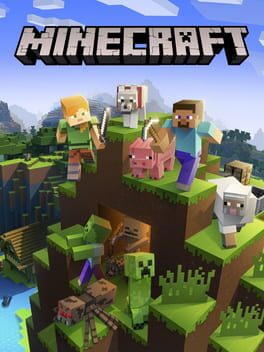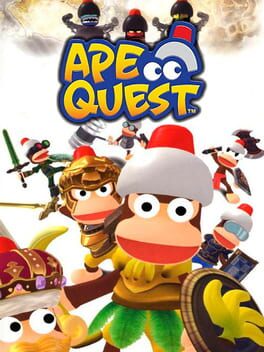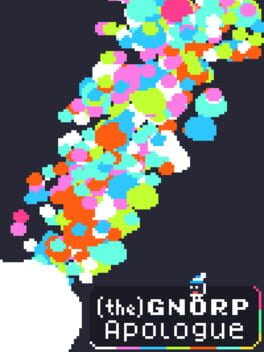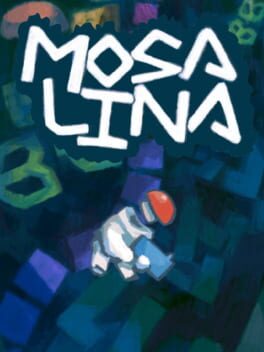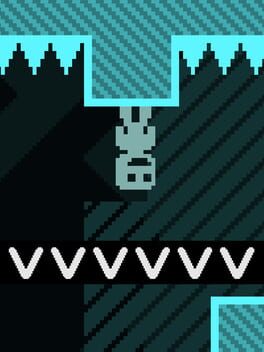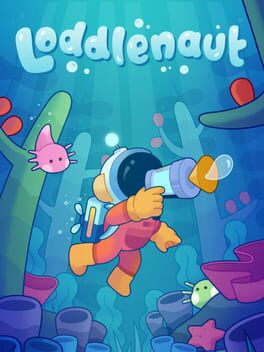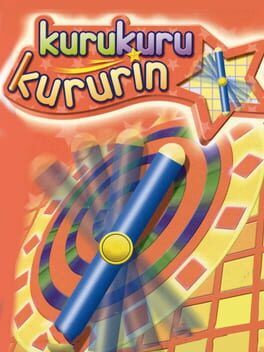GirambQuamb
It's easy to write off technical marvels of yesteryear. Sure, a working 3D Monkey Ball on the GBA is an insane thing to even exist, but appreciating it on an interactive level can be a challenge in the first few minutes of gameplay. This is a franchise that relies heavily on analogue input and depth perception; playing it on a 2.9" screen with a d-pad and two face buttons is bound to bring some frustration.
Even so, when you get the hang of it Super Monkey Ball Jr. does offer a rewarding challenge, and utilizes some great features to make it a worthy portable expedient. I played this game exactly where it was meant to be played, on the bus and in the break room at work. With some accessible cheat codes to enable unlimited continues, SMB Jr. becomes a great pickup and putdown game for those looking for a bite-sized bit of precision.
The game isn't without sore spots. Expert levels ask quite a lot of the player, and it can be hard to imagine beating later challenges without using the inverted Konami code on the title screen. The lagging camera and difficulty involved with making micro-adjustments are a particularly big source of frustration. Still, it's hard to be too upset when you're playing Monkey Ball on a device with less than half a megabyte of RAM. Especially when the gameplay is as competent as it is.
Even so, when you get the hang of it Super Monkey Ball Jr. does offer a rewarding challenge, and utilizes some great features to make it a worthy portable expedient. I played this game exactly where it was meant to be played, on the bus and in the break room at work. With some accessible cheat codes to enable unlimited continues, SMB Jr. becomes a great pickup and putdown game for those looking for a bite-sized bit of precision.
The game isn't without sore spots. Expert levels ask quite a lot of the player, and it can be hard to imagine beating later challenges without using the inverted Konami code on the title screen. The lagging camera and difficulty involved with making micro-adjustments are a particularly big source of frustration. Still, it's hard to be too upset when you're playing Monkey Ball on a device with less than half a megabyte of RAM. Especially when the gameplay is as competent as it is.
2022
Your friend has been bugging you to play this. They want to spoil as little as possible, because there's an immaculate feeling of mystery and discovery waiting for you.
Listen to to them. Go in blind, don't look up walkthroughs, and enjoy the fact that this is a once-in-a-lifetime game; a game that only gets better and better as it goes on. You'll thank them later.
Listen to to them. Go in blind, don't look up walkthroughs, and enjoy the fact that this is a once-in-a-lifetime game; a game that only gets better and better as it goes on. You'll thank them later.
1994
Likely don't have anything to say that hasn't already been said. Super Metroid rides along its deep sense of exploration, tough but exhilarating combat, and its mysterious (sometimes dreadful) atmosphere.
It can be frustrating at times for a new player. Some required means of progression call for a walkthrough if time is to be respected. There's some interesting choices towards the end of the game that work against it, namely the screwattack destroying once traversable platforms.
But the game truly is a master class in design. Aside from the obvious, I'd love to point out how well placed the enemies are. Makes backtracking more fun and less mindless.
It can be frustrating at times for a new player. Some required means of progression call for a walkthrough if time is to be respected. There's some interesting choices towards the end of the game that work against it, namely the screwattack destroying once traversable platforms.
But the game truly is a master class in design. Aside from the obvious, I'd love to point out how well placed the enemies are. Makes backtracking more fun and less mindless.
A cute and well-presented jam from the Celeste devs! It's a nice challenge to get all the strawberries, but certainly does not overstay its welcome.
My biggest gripe is the perspective. I'm not sure whether it's more the fault of the camera or the lighting, but it's very hard to judge how far your are from platforms. Even with the z-axis guide turned on, it's very easy to overshoot jumps. This was a big source of frustration.
But it's a fun lil game to blast through. Challenges that don't stem from perspective are rewarding, the music bangs (as expected), and the Mario Sunshine-esque bonus levels are a good way to break up the pacing.
My biggest gripe is the perspective. I'm not sure whether it's more the fault of the camera or the lighting, but it's very hard to judge how far your are from platforms. Even with the z-axis guide turned on, it's very easy to overshoot jumps. This was a big source of frustration.
But it's a fun lil game to blast through. Challenges that don't stem from perspective are rewarding, the music bangs (as expected), and the Mario Sunshine-esque bonus levels are a good way to break up the pacing.
2023
To say that the movement in Pseudoregalia does all the heavy lifting would be at least slightly disingenuous, but it cannot be downplayed how smooth and expressive the traversal is. The depth at play here is one thing; there's so many advanced techniques and interesting ways to progress through rooms that one could get it in their head that they're sequence breaking. Hell, they might be.
But what really solidifies this as a must-play - the true testament to how wonderfully designed this package is - is how much the rooms and map compliment said movement.
Pseudoregalia expects the player to explore, but more than that it expects the player to invent. Once all the abilities are unlocked, there's no need to take intended paths through its interconnected areas. Players forge their own paths by chaining wall-kicks, canceling ground pounds and maybe even learning how busted side-flips are. Nothing feels out of reach, and everything feels within the realm of possibility when it comes to level layouts.
This game isn't perfect. There's no map system (it's coming in an update), the game is relatively short, and aside from two specific encounters combat isn't particularly engaging. Sore spots, for sure. One could even make the argument that the low polygon count and low resolution textures make the game a bit bland looking, though I'd counter that with it being part of the N64-inspired charm. It truly doesn't matter anyway. To say these blemishes take away from the joy of playing... That's more than slightly disingenuous.
This game is a masterfully tight and well-crafted experience. It's a blast to control and a joy to discover. Absolutely worth the play whether or not you're planning on jacking off to the goat lady.
But what really solidifies this as a must-play - the true testament to how wonderfully designed this package is - is how much the rooms and map compliment said movement.
Pseudoregalia expects the player to explore, but more than that it expects the player to invent. Once all the abilities are unlocked, there's no need to take intended paths through its interconnected areas. Players forge their own paths by chaining wall-kicks, canceling ground pounds and maybe even learning how busted side-flips are. Nothing feels out of reach, and everything feels within the realm of possibility when it comes to level layouts.
This game isn't perfect. There's no map system (it's coming in an update), the game is relatively short, and aside from two specific encounters combat isn't particularly engaging. Sore spots, for sure. One could even make the argument that the low polygon count and low resolution textures make the game a bit bland looking, though I'd counter that with it being part of the N64-inspired charm. It truly doesn't matter anyway. To say these blemishes take away from the joy of playing... That's more than slightly disingenuous.
This game is a masterfully tight and well-crafted experience. It's a blast to control and a joy to discover. Absolutely worth the play whether or not you're planning on jacking off to the goat lady.
2011
What makes Minecraft so special in my eyes is its unwavering commitment to true sandbox gameplay. There's always something to do. Always something to try. Always something new to learn.
That freedom to do whatever my heart desired led me to digging my base into the side of a mountain, living off the meat of slaughtered wildlife and rushing the Ender Dragon. Not a very adventurous bout, but the newer content like Nether biomes and Piglins (I haven't played in quite some time...) were enough to breathe some fresh air into my playthrough.
I can't see myself devoting hours upon hours of my life to this game anymore, but I can absolutely see why people continue to.
That freedom to do whatever my heart desired led me to digging my base into the side of a mountain, living off the meat of slaughtered wildlife and rushing the Ender Dragon. Not a very adventurous bout, but the newer content like Nether biomes and Piglins (I haven't played in quite some time...) were enough to breathe some fresh air into my playthrough.
I can't see myself devoting hours upon hours of my life to this game anymore, but I can absolutely see why people continue to.
2008
Ape Quest could be most succinctly described as a goofy turn-based RPG with hints of Mario Party. The problem with describing it that way is that it implies there's at least a hint of good gameplay involved. That is not the case.
The three Apetrons (Pipotrons, for you real Ape Escape lovers) have escaped from their cursed seal and are wreaking havoc on the Toqsica Kingdom. As the king's son, players are tasked with traversing three continents - divided into three separate chapters - in order to defeat the trio and bring peace to the land. Vanquish foes, complete quests, take on dungeons, and meet many an ape on a journey to upgrade your equipment and abilities.
The gameplay of Ape Quest can be divided into three main game states: Traversal, turn-based combat, and minigames.
Traversal is a slog. In place of free range of motion, players simply choose between preset paths to get from A to B. Looking towards a path shows how many spaces must be traversed, each step armed with the chance for a minigame, battle, or random event - with red paths denoting an increased difficulty in these potential encounters. Set pieces are sparse and the three continents are generally a gross mess of grass, sand and lava textures - a great incentive to put your PSP down and look at something else while your character automatically moves forward... slowly...
This system would serve the game well if there were any semblance of decision making, but it entirely boils down to red paths being shorter than blue. An easy decision for any well-equipped player who doesn't want to play more of the godawful minigames or fight the same enemies over and over.
Putting aside bosses and elemental modifiers, there are three enemies you will encounter in this game, all of which are some variation of a skeleton holding a weapon. Combat is boring and uninspired. Attack enemies, use techniques, heal with one of many healing potions found along the way. The only interesting thing in the combat sections is the option to spend money to call in the Ape Team, which unleashes a flurry of attacks from every vendor the player's interacted with. Unfortunately, doing so results in a long series of animations, which makes battles last far too long even on the epilepsy-inducing fast battle speed. Mashing the X button to attack tends to be the most painless option.
Mind you, players can only hope to waste their time on battles. The alternative is playing one of a dozen or so minigames. These include things like balancing on a rope with the dpad, deflecting arrows with a shield, or jumping across falling rocks to reach the top of a chasm. Nothing screams "Ape Escape" like timing your jumps to avoid a bouncing boulder. There are a few that stand out as particularly goofy - like waddling to the next unoccupied portable toilet without pooping your monkey trousers - but these mostly serve as a reminder that this game is part of a franchise that's supposed to be charming.
If this game were simply a soul-less Ape Escape RPG, it could at least be written off as... that. And make no mistake, it is that, but even the unique mechanics of Ape Quest paint a worse picture. A perfect example of this is how players are tasked with upgrading equipment. It's not likely to find a killer weapon in the wild, but players will find themselves amassing piles of mid-tier spears and swords. The true path to one-shotting enemies is through the Smithy system, in which players spend tickets to combine two of their pieces of equipment. The catch? Dice rolls. What a player gets out of combining equipment is influenced by what they choose to amalgamate, but is ultimately left to random chance. Can't beat the final boss? Players can feel free to combine their two best weapons into something marginally worse. Back to the grind!
And the bosses... It would be a blessing in disguise if all of these were regular combat encounters, but unfortunately the majority of them are real-time combat minigames - with most of those being 2D platforming fights. These are all required and tend to lean towards laughably easy. Dodge telegraphed attacks and whittle away health with arrows. Best not lose, or it's back to the nearest town for another trek through minigame hell.
I've given this game more thought than it deserves. There's so many baffling decisions. Players have to spend money to unlock the music of each continent - it just plays the drums otherwise. Sometimes instead of a minigame you get stopped by an ape that asks you a random question, gives you nothing and leaves. A welcomed encounter, but still a confusing one.
Ape Quest is not a good game. Beyond the lifeless world, forgettable characters, and languid pacing - even beyond the game being unequivocally not fun - it's simply void of anything that makes Ape Escape such a wonderful franchise. That name being attached to this is what truly makes this banana rotten.
The three Apetrons (Pipotrons, for you real Ape Escape lovers) have escaped from their cursed seal and are wreaking havoc on the Toqsica Kingdom. As the king's son, players are tasked with traversing three continents - divided into three separate chapters - in order to defeat the trio and bring peace to the land. Vanquish foes, complete quests, take on dungeons, and meet many an ape on a journey to upgrade your equipment and abilities.
The gameplay of Ape Quest can be divided into three main game states: Traversal, turn-based combat, and minigames.
Traversal is a slog. In place of free range of motion, players simply choose between preset paths to get from A to B. Looking towards a path shows how many spaces must be traversed, each step armed with the chance for a minigame, battle, or random event - with red paths denoting an increased difficulty in these potential encounters. Set pieces are sparse and the three continents are generally a gross mess of grass, sand and lava textures - a great incentive to put your PSP down and look at something else while your character automatically moves forward... slowly...
This system would serve the game well if there were any semblance of decision making, but it entirely boils down to red paths being shorter than blue. An easy decision for any well-equipped player who doesn't want to play more of the godawful minigames or fight the same enemies over and over.
Putting aside bosses and elemental modifiers, there are three enemies you will encounter in this game, all of which are some variation of a skeleton holding a weapon. Combat is boring and uninspired. Attack enemies, use techniques, heal with one of many healing potions found along the way. The only interesting thing in the combat sections is the option to spend money to call in the Ape Team, which unleashes a flurry of attacks from every vendor the player's interacted with. Unfortunately, doing so results in a long series of animations, which makes battles last far too long even on the epilepsy-inducing fast battle speed. Mashing the X button to attack tends to be the most painless option.
Mind you, players can only hope to waste their time on battles. The alternative is playing one of a dozen or so minigames. These include things like balancing on a rope with the dpad, deflecting arrows with a shield, or jumping across falling rocks to reach the top of a chasm. Nothing screams "Ape Escape" like timing your jumps to avoid a bouncing boulder. There are a few that stand out as particularly goofy - like waddling to the next unoccupied portable toilet without pooping your monkey trousers - but these mostly serve as a reminder that this game is part of a franchise that's supposed to be charming.
If this game were simply a soul-less Ape Escape RPG, it could at least be written off as... that. And make no mistake, it is that, but even the unique mechanics of Ape Quest paint a worse picture. A perfect example of this is how players are tasked with upgrading equipment. It's not likely to find a killer weapon in the wild, but players will find themselves amassing piles of mid-tier spears and swords. The true path to one-shotting enemies is through the Smithy system, in which players spend tickets to combine two of their pieces of equipment. The catch? Dice rolls. What a player gets out of combining equipment is influenced by what they choose to amalgamate, but is ultimately left to random chance. Can't beat the final boss? Players can feel free to combine their two best weapons into something marginally worse. Back to the grind!
And the bosses... It would be a blessing in disguise if all of these were regular combat encounters, but unfortunately the majority of them are real-time combat minigames - with most of those being 2D platforming fights. These are all required and tend to lean towards laughably easy. Dodge telegraphed attacks and whittle away health with arrows. Best not lose, or it's back to the nearest town for another trek through minigame hell.
I've given this game more thought than it deserves. There's so many baffling decisions. Players have to spend money to unlock the music of each continent - it just plays the drums otherwise. Sometimes instead of a minigame you get stopped by an ape that asks you a random question, gives you nothing and leaves. A welcomed encounter, but still a confusing one.
Ape Quest is not a good game. Beyond the lifeless world, forgettable characters, and languid pacing - even beyond the game being unequivocally not fun - it's simply void of anything that makes Ape Escape such a wonderful franchise. That name being attached to this is what truly makes this banana rotten.
2023
It's fair to say that (the) Gnorp Apolgue sets itself apart from your run-of-the-mill incremental game. All the basics are there; click rock, collect shards, buy things with shards to better help you click and collect. What makes it so unique is how these incremental gains interact with each other, and how much planning and managing is needed to successfully complete it. Players can and will need to evaluate their strategy, lest their production line fall behind.
Where many incremental games have you prestige for the sheer sake of making numbers rise quicker, (the) Gnorp Apologue requires it. Rate of excess shard production needs to increase to move along compression tiers, but rate of collection is what allows for buying units, housing and other upgrades. In fact, increasing collection rate is precisely what unlocks talent points, which can be spent on subsequent runs for passive bonuses that make getting to higher tiers more manageable. It's a balancing act, and a surprisingly engaging one at that.
Visuals are simplistic, but suit the game very well. Hardcore fans of incremental games no longer need to turn to UI-only games for their best-of recommendations, though the UI itself leaves a little to be desired. Tooltips for damage and collection rates of individual units would be nice, as it takes a while to learn what each symbol represents, and early portions of runs can be ruined by trying to buy units too fast, resulting in buying unneeded upgrades at best, and build-ruining ones at worst.
The builds are by far the most interesting aspect of (the) Gnorp Apologue. Planning ahead pays off, yet looking through Steam discussion posts point towards there being a wide variety of strategies that work. Experimentation is encouraged - wonderfully so - though it could turn some players away when they realize the build they've invested an hour or so into just isn't going to cut it.
(the) Gnorp Apologue, with its clear goal but many paths to victory, as well as its intertwined and engaging systems serves as not only a great introduction to incremental games, but cements it as one of the finest. It's rock solid.
Where many incremental games have you prestige for the sheer sake of making numbers rise quicker, (the) Gnorp Apologue requires it. Rate of excess shard production needs to increase to move along compression tiers, but rate of collection is what allows for buying units, housing and other upgrades. In fact, increasing collection rate is precisely what unlocks talent points, which can be spent on subsequent runs for passive bonuses that make getting to higher tiers more manageable. It's a balancing act, and a surprisingly engaging one at that.
Visuals are simplistic, but suit the game very well. Hardcore fans of incremental games no longer need to turn to UI-only games for their best-of recommendations, though the UI itself leaves a little to be desired. Tooltips for damage and collection rates of individual units would be nice, as it takes a while to learn what each symbol represents, and early portions of runs can be ruined by trying to buy units too fast, resulting in buying unneeded upgrades at best, and build-ruining ones at worst.
The builds are by far the most interesting aspect of (the) Gnorp Apologue. Planning ahead pays off, yet looking through Steam discussion posts point towards there being a wide variety of strategies that work. Experimentation is encouraged - wonderfully so - though it could turn some players away when they realize the build they've invested an hour or so into just isn't going to cut it.
(the) Gnorp Apologue, with its clear goal but many paths to victory, as well as its intertwined and engaging systems serves as not only a great introduction to incremental games, but cements it as one of the finest. It's rock solid.
2015
Hylics has me very torn. This game has surrealism down to a T. The art style is to die for, the music is wonderfully weird, and the world and dialogue are as confusing as they are morbidly hilarious. But it's the vibe alone that does the heavy lifting.
That vibe is what seems seems to get in the way of Hylics being a joy to actually play. The art, beautiful as it is makes it confusing to tell where your character can and can't go - and that's just regarding overworld movement, let alone the question of where the player is meant to go to progress.
The game is filled to the brim with busywork. Combat aside there's just a lot of wandering around and interacting with everything, which serves well as a means of discovering all there is to see, but doesn't make for very fun or interesting play. Mix that with relatively straightforward combat and a few sections you'll be redoing thanks to enemies that kill you instantly, and suddenly the game feels more like a chore.
None of this is to say that Hylics has to be fun. It's an aesthetic experience - more akin to visiting an art gallery than playing an RPG. I'd happily recommend it to anyone looking for a brief journey into the world of RPG Maker weirdness, but it's just not a game that makes the most of its medium.
That vibe is what seems seems to get in the way of Hylics being a joy to actually play. The art, beautiful as it is makes it confusing to tell where your character can and can't go - and that's just regarding overworld movement, let alone the question of where the player is meant to go to progress.
The game is filled to the brim with busywork. Combat aside there's just a lot of wandering around and interacting with everything, which serves well as a means of discovering all there is to see, but doesn't make for very fun or interesting play. Mix that with relatively straightforward combat and a few sections you'll be redoing thanks to enemies that kill you instantly, and suddenly the game feels more like a chore.
None of this is to say that Hylics has to be fun. It's an aesthetic experience - more akin to visiting an art gallery than playing an RPG. I'd happily recommend it to anyone looking for a brief journey into the world of RPG Maker weirdness, but it's just not a game that makes the most of its medium.
2023
A clever game with an interesting format. Players are tasked with completing 9 static levels per run, but the gadgets they're given - and which level they're attempting - is decided at random every time they pass or fail.
Mosa Lina doesn't just want players to experiment, it forces them to. They're expected to try weird and wacky things with the tools at their disposal, and even when plans fail, the notion of this totally could've worked if I had just done it differently is enough to keep any player engaged, let alone when their half-baked plan actually works.
This game thrives on the intrinsic rewards of making the player feel. Even beyond the stylized art and droning music, the gameplay loop alone brings feelings of resourcefulness, bravery, and dexterity. If you're looking for a cheap game that makes your brain feel big, Mosa Lina is a no-brainer.
Mosa Lina doesn't just want players to experiment, it forces them to. They're expected to try weird and wacky things with the tools at their disposal, and even when plans fail, the notion of this totally could've worked if I had just done it differently is enough to keep any player engaged, let alone when their half-baked plan actually works.
This game thrives on the intrinsic rewards of making the player feel. Even beyond the stylized art and droning music, the gameplay loop alone brings feelings of resourcefulness, bravery, and dexterity. If you're looking for a cheap game that makes your brain feel big, Mosa Lina is a no-brainer.
1986
Played through pretty quickly with a walkthrough by my side because I wanted to learn the randomizer for this game. It's hard! Beyond the normal critique of "how would anyone know how to do any of this," the game's just difficult. Plenty of rooms that are aggravatingly arranged.
All that being said, there's some surprising mechanical depth to the less-freeform-than-alttp movement, and it's very satisfying to play well.
Here's hoping the randomizer has some QoL settings...
All that being said, there's some surprising mechanical depth to the less-freeform-than-alttp movement, and it's very satisfying to play well.
Here's hoping the randomizer has some QoL settings...
2010
Been a while since I've played this one. A classic indie banger! Wonderfully crafted precision "platforming" with an interesting bunch of gimmicks that don't overstay their welcome.
The greatest praise I can give this game is how intuitive the mechanics all feel. Through both their simplicity and the environments in which they're taught, things like gravity-flipping, screen-wrapping, platform-disintegrating and more are all very easy to pick up.
My biggest complaint is that it's short. I can grind for time trials and Super Gravitron runs, but otherwise there's not too much else to do post-game aside from play it again. At least that's incentivized via death count related achievements.
Amazing soundtrack too!
The greatest praise I can give this game is how intuitive the mechanics all feel. Through both their simplicity and the environments in which they're taught, things like gravity-flipping, screen-wrapping, platform-disintegrating and more are all very easy to pick up.
My biggest complaint is that it's short. I can grind for time trials and Super Gravitron runs, but otherwise there's not too much else to do post-game aside from play it again. At least that's incentivized via death count related achievements.
Amazing soundtrack too!
2023
It's fine. Cute game with no real stakes. It's a long series of menial tasks, but not in a bad way. It's a game about cleaning and you clean.
Annoyances mostly boil down to inventory space and constant loss of boost, but I suppose less/quicker travel between areas would make this 4 hour game even shorter. Also takes some getting used to that you can't retreat from the direction you're cleaning whilst actually cleaning.
I don't really care for the loddles. They're cute, but I can't bring myself to care as much when there's mechanics like hunger attached to em. Makes them feel more like a Tamagotchi than a wild animal you can interact with.
I'd recommend it to anyone who wants to catch up on some podcasts while cleaning virtual space instead of their real living space.
Annoyances mostly boil down to inventory space and constant loss of boost, but I suppose less/quicker travel between areas would make this 4 hour game even shorter. Also takes some getting used to that you can't retreat from the direction you're cleaning whilst actually cleaning.
I don't really care for the loddles. They're cute, but I can't bring myself to care as much when there's mechanics like hunger attached to em. Makes them feel more like a Tamagotchi than a wild animal you can interact with.
I'd recommend it to anyone who wants to catch up on some podcasts while cleaning virtual space instead of their real living space.
2001



